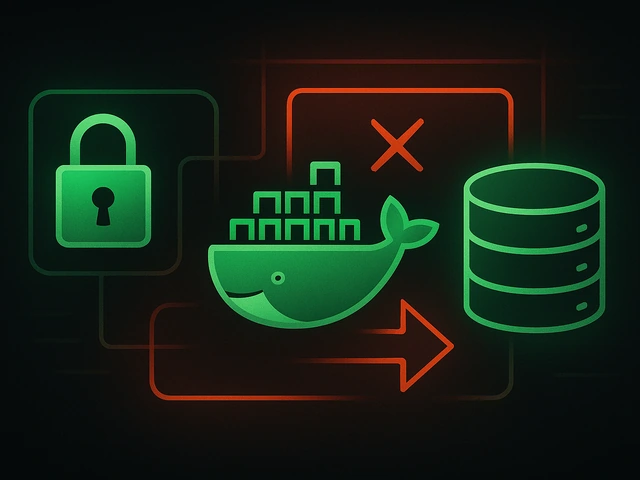
In the previous article, we considered several of the most popular operating systems that are usually chosen for installation on VPS servers. And today we want ...
3v-Hosting Blog
6 min read
The command-line interface (CLI) is a powerful tool in Linux that allows users to interact with the system efficiently. Frequently used commands can be lengthy or complex, making them cumbersome to type repeatedly. Linux provides a feature called aliases to address this.
Aliases allow users to create shortcuts for commands, improving workflow and productivity. Aliases are particularly useful for system administrators, developers, and power users who work extensively in the terminal. They help in automating repetitive tasks, ensuring consistent execution and minimising errors due to typing mistakes.Understand how to create, manage and persist aliases and you will see a significant enhancement in your command-line experience.
Aliases in Linux are essentially user-defined shortcuts for commands. When an alias is set, the system replaces it with the corresponding command before executing it. Aliases are a built-in feature of most Unix-based shells, including Bash, Zsh, and Fish.
The primary use cases for aliases include:
- Simplifying frequently used commands
- Avoiding accidental mistakes (e.g., preventing destructive commands)
- Enhancing efficiency by reducing keystrokes
- Customizing shell behavior
The syntax for defining an alias in Linux is straightforward:
alias short_name='command_to_execute'
For example, to create an alias that lists files in long format with human-readable sizes, you can use:
alias ll='ls -lah'
After defining this alias, typing ll in the terminal will execute ls -lah.
To check existing aliases, use:
alias
To see the command associated with a specific alias, use:
alias alias_name
If you need to remove an alias from the current session, use the unalias command:
unalias alias_name
For example, to remove the previously defined ll alias:
unalias ll
To remove all aliases from the current session:
unalias -a
By default, aliases created in a terminal session are temporary and will be lost once the terminal is closed. To make an alias persistent, it needs to be added to a shell configuration file, such as:
~/.bashrc (for Bash users)
~/.zshrc (for Zsh users)
~/.bash_aliases (if included in .bashrc)
To make ll persistent, add the following line to ~/.bashrc:
echo "alias ll='ls -lah'" >> ~/.bashrc
After editing the file, apply the changes using:
source ~/.bashrc
For Zsh users, replace ~/.bashrc with ~/.zshrc.
Aliases are not just for shortening commands; they can improve safety, efficiency, and productivity.
A common mistake is using rm without realizing it will permanently delete files. To make rm safer by prompting before deletion, create this alias:
alias rm='rm -i'
Now, every time you use rm, it will ask for confirmation before deleting a file.
If you frequently navigate to a specific directory, you can create an alias:
alias projects='cd ~/Documents/Projects'
Typing projects will instantly take you to the ~/Documents/Projects directory.
For Debian-based distributions like Ubuntu, updating the system usually requires multiple commands. Instead of typing them separately, you can create an alias:
alias update='sudo apt update && sudo apt upgrade -y'
alias update='sudo pacman -Syu'
This saves time and ensures consistency in updates.
Aliases can include functions for more complex tasks. For example, an alias that extracts different archive formats:
alias extract='function _extract() { case $1 in *.tar.bz2) tar xjf "$1" ;; *.tar.gz) tar xzf "$1" ;; *.zip) unzip "$1" ;; *.rar) unrar x "$1" ;; *) echo "Unknown format" ;; esac; }; _extract'
This alias allows extraction of .tar.gz, .zip, and .rar files using extract filename.
While aliases are useful for simple command substitutions, they have limitations, such as not handling arguments well. For more complex operations, shell functions are a better alternative.
Example of a function that creates a backup of a file before editing it:
backup_edit() {
cp "$1" "$1.bak"
nano "$1"
}
Save this function in ~/.bashrc or ~/.zshrc, and it can be used like:
backup_edit filename.txt
Unlike aliases, functions can handle parameters and complex logic.
To maintain an organized alias setup:
Group similar aliases together – Keep navigation, safety, and productivity aliases in separate sections.
Use descriptive alias names – Avoid cryptic names; use meaningful identifiers like update or projects.
Keep aliases portable – Store them in ~/.bash_aliases (if your shell supports it) to keep them modular.
Regularly review and update aliases – Remove unused aliases and refine frequently used ones.
Aliases in Linux are a simple yet powerful feature that streamlines command execution, improves efficiency and enhances workflow.Whether you use aliases to shorten frequently typed commands, prevent accidental mistakes or automate routine tasks, you will find them beneficial.
For more advanced needs, shell functions may be a better option, but for quick and effective command substitutions, aliases are an essential tool in any Linux user's arsenal. Learn to create, manage, and persist aliases to customise your shell environment and boost your workflow and productivity.

Learn how IP addresses work: IPv4 vs IPv6, public and private IPs, DNS resolution, routing, security basics, and how IPs are used in real server and cloud infra...

Accelerating WordPress at the Nginx level: correct PHP-FPM settings, try_files, static files, caching, Brotli, wp-login protection, and secure headers for stabl...

Effective backup strategies for Docker applications: how to protect volumes, data, and configurations while avoiding common mistakes, and quickly restore servic...